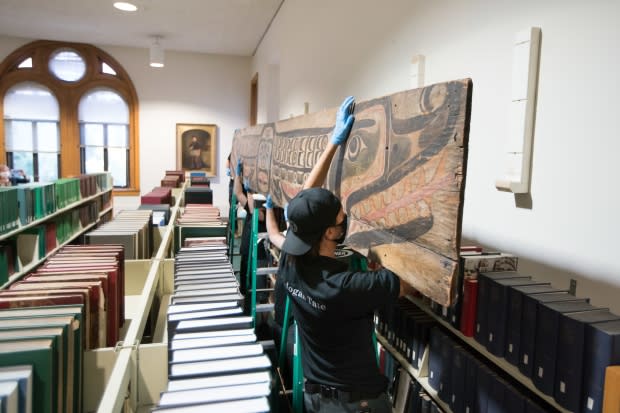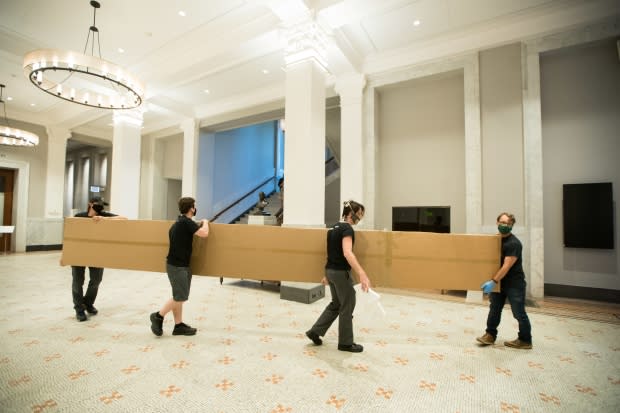Gone for over a century, a 'special' piece of Kwakwaka'wakw history is returning home
An important part of Kwakwaka'wakw history is on its way back home to Alert Bay, B.C., after spending 127 years in Chicago.
The wooden plank almost six-metres in length features the carved and painted image of Sisiyutl — the legendary two-headed sea serpent — and once adorned the front of a traditional big house in the community on Cormorant Island off the north coast of Vancouver Island.
Unlike many repatriated items, the Sisiyutl was purchased — not stolen — for display at the World's Columbian Exposition in 1893. It's now being shipped to the U'mista Cultural Centre from the Newberry Library in Chicago.
"It feels very good," Bill Cranmer, board chair of the U'mista Cultural Centre, told CBC's On The Island.
"It's a very, very special part of our ceremonies."

The Sisiyutl is sometimes referred to as a "double-headed sea serpent," Cranmer said. Not everyone had the right to use it in ceremonies, and it was seen as either a cause of death or good fortune, depending on how one encountered it, he added.
It ended up in Chicago when Kwakwaka'wakw people were recruited to perform at the exhibition in 1893, Cranmer said. At that time, First Nations ceremonies were banned in Canada under the potlatch ban, which lasted from 1885 to 1951.
After the exposition was over, anthropologist Franz Boas hired Kwakwaka'wakw ethnographer and collector George Hunt, who bought the Sisiyutl from its owner, Cranmer said.
It made its way from institution to institution until it was decided several years ago that the best thing to do was to return it where it belonged, Cranmer said.
Thousands of dollars in shipping costs proved prohibitive, until someone recently stepped up to foot the bill.
Cranmer said the panel will be displayed when it returns and will be featured in the U'mista Cultural Centre's expansion plans.
'A real commitment to a long-term relationship'
Lou-ann Neel, Head of Indigenous Collections and Repatriation at the Royal B.C. Museum, said it's a positive move toward reconciliation.
"I'm from Alert Bay originally, so I was absolutely thrilled to hear about this and I thought it was a really great move on the part of the folks who've been storing this … all these years," Neel told CBC's All Points West.
"Because I think it signals a real commitment to a long-term relationship."
Neel works with Indigenous communities in B.C. to support them in the lengthy process of repatriating their belongings.
Several years ago, the province invested $2 million to assist with repatriation, she said. Since then, one of the museum's biggest priorities has been to return ancestral remains.
Human remains were stored at the museum because it acted as a repository for the province when remains were discovered during building and land development, she said.
"We've actually managed to get well over half of the human remains that are in the museum returned to their home communities," Neel said.
Private collections are another area in which the museum collaborates with community members. Many items historically removed from Indigenous communities didn't go to museums, but ended up in individual private collections.
Now, great-grandchildren of those collectors are asking for the museum's help in identifying and reuniting stolen or purchased artifacts with the communities they belong to, Neel said.
"That's really a healthy, wonderful turn of events, because we wouldn't otherwise know where some of these pieces ever landed," Neel said.
The effort made to return the Sisiyutl panel shows goodwill and opens a conversation on how items like these can be returned, Neel added.
"Them gifting it back, that's a real sign of, I think, a good relationship," she said.



